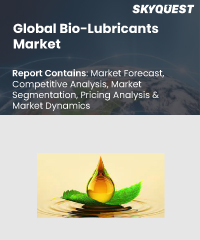
Report ID: SQMIG20I2242

Report ID:
SQMIG20I2242 |
Region:
Global |
Published Date: February, 2024
Pages:
157
|
Tables:
65 |
Figures:
75
Global Bio-Lubricants Market size was valued at USD 2.92 Billion in 2021 and is poised to grow from USD 3.06 Billion in 2022 to USD 4.41 Billion by 2030, at a CAGR of 4.7% during the forecast period (2023-2030).
The global bio-lubricants market is experiencing steady growth as industries increasingly seek sustainable and environmentally friendly alternatives to conventional lubricants. The market is driven by various factors, with one key driver being stringent environmental regulations aimed at reducing carbon emissions and promoting sustainable practices. Governments and regulatory bodies across the globe are implementing policies to encourage the use of bio-lubricants, creating a favourable market environment. Additionally, growing consumer awareness and preference for eco-friendly products contribute to the demand for bio-lubricants. The market is also driven by the expansion of industries such as automotive, manufacturing, and marine, which require lubricants that offer better performance and environmental benefits. However, the bio-lubricants market also faces challenges.
One significant challenge is the higher cost of bio-lubricants compared to conventional lubricants. The production process and sourcing of raw materials contribute to the increased costs, making bio-lubricants less economically viable for some industries. Another challenge is the limited availability and compatibility of bio-lubricants with existing machinery and equipment. Manufacturers need to ensure that bio-lubricants are compatible with a wide range of machinery to promote their adoption. Despite these challenges, the global bio-lubricants market is expected to grow further as sustainability concerns continue to drive the demand for eco-friendly alternatives across industries. Continued research and development efforts, cost reduction strategies, and industry collaborations will play a crucial role in overcoming challenges and realising the full potential of bio-lubricants in the global market.
Our industry expert will work with you to provide you with customized data in a short amount of time.
REQUEST FREE CUSTOMIZATIONWant to customize this report? This report can be personalized according to your needs. Our analysts and industry experts will work directly with you to understand your requirements and provide you with customized data in a short amount of time. We offer $1000 worth of FREE customization at the time of purchase.

Report ID: SQMIG20I2242